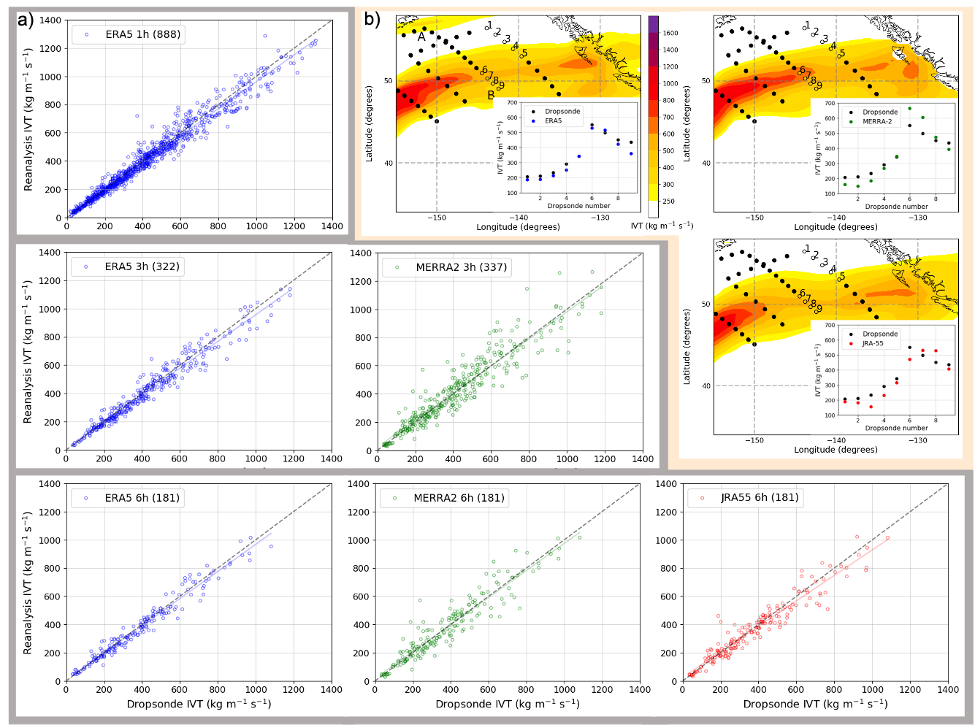CW3E Publication Notice
Representation of dropsonde-observed atmospheric river conditions in reanalyses
July 16, 2021
Alison Cobb, a postdoctoral scholar at CW3E, recently published a paper in Geophysical Research Letters, along with CW3E co-authors Luca Delle Monache, Forest Cannon, and F. Martin Ralph, titled “Representation of dropsonde-observed atmospheric river conditions in reanalyses” (Cobb et al. 2021). This study contributes to the goals of CW3E’s 2019-2024 Strategic Plan to support Atmospheric River (AR) Research and Applications by assessing the skill of widely used reanalysis datasets to accurately represent AR conditions.
In this study, a large dataset of >1700 dropsondes was compared to three atmospheric reanalysis datasets: ERA5, MERRA-2, and JRA-55. The ability of these reanalyses to provide a ground-truth dataset for the IVT field in and around atmospheric rivers (ARs) is assessed. It was found that bias and error increase with IVT magnitude, although asymmetrically around the AR core. A partitioning of the source of error reveals that humidity contributes more to the difference in IVT above 800 hPa, while wind is the dominant source in the lowest levels (to 950 hPa). This quantification of reanalysis error and bias identifies ERA5 as the dataset with the lowest IVT errors, which is unsurprising, given it is the most recently developed dataset, with the highest resolution and advanced data assimilation.
The Cobb et al. (2021) study was the first of its kind to directly compare such a vast quantity of dropsonde observations in and around ARs to several reanalysis products. An important goal of AR observational campaigns is to retrieve data that will reduce forecast error and uncertainty in real-time. This study has shown the value of these observations to research, assessing model performance and highlighting remaining challenges in representing the observed state in ARs. Results from this study can help to inform users of reanalysis datasets in the northeast Pacific about their skill in relation to IVT, as well as its wind and water vapor components. This work supports ongoing collaborations involving CW3E, NOAA, NRL, U.S. Army Corps of Engineers, NCAR, and ECMWF.
Figure 1: a) Reanalysis IVT against dropsonde IVT calculated using all dropsonde levels, with regression lines marked for each dataset (1-hourly, 3-hourly and 6-hourly samples). b) Reanalysis IVT at 00 UTC 2nd March (2020 IOP 12) in colored contours. Dropsondes within 30 minutes color-coded with dropsonde IVT and shown on inset scatter plots alongside reanalysis IVT. Remaining dropsondes during this IOP marked with black dots.
Cobb, A., Delle Monache, L., Cannon, F., & Ralph, F. M. (2021). Representation of dropsonde-observed atmospheric river conditions in reanalyses. Geophysical Research Letters, 48, e2021GL093357, https://doi.org/10.1029/2021GL093357

